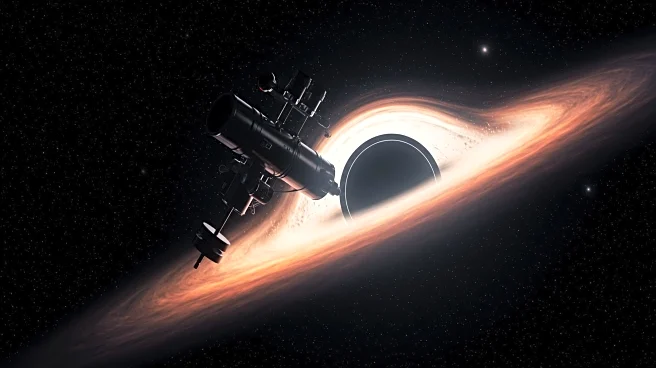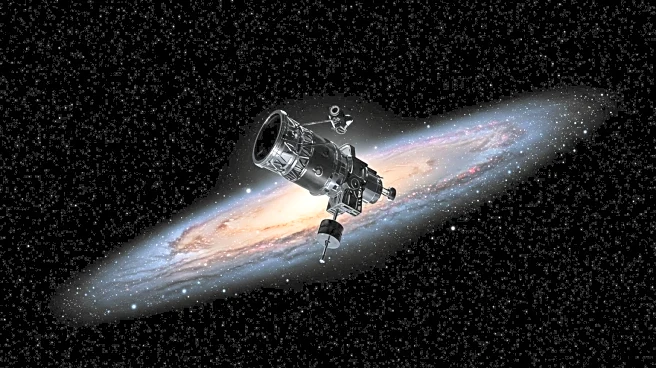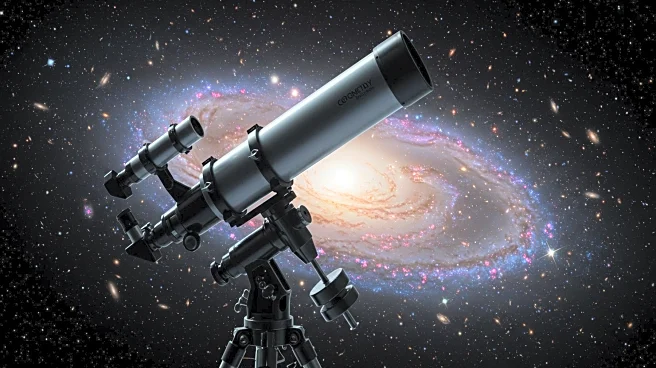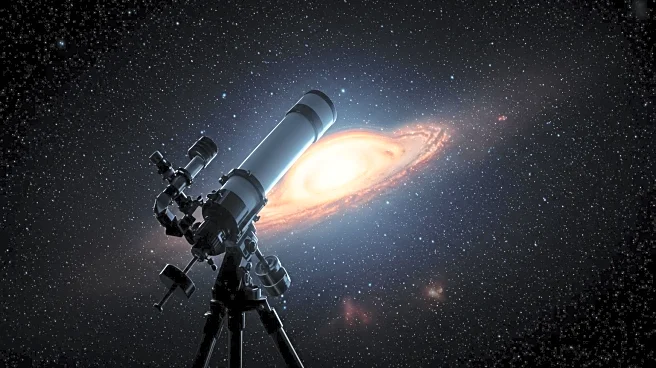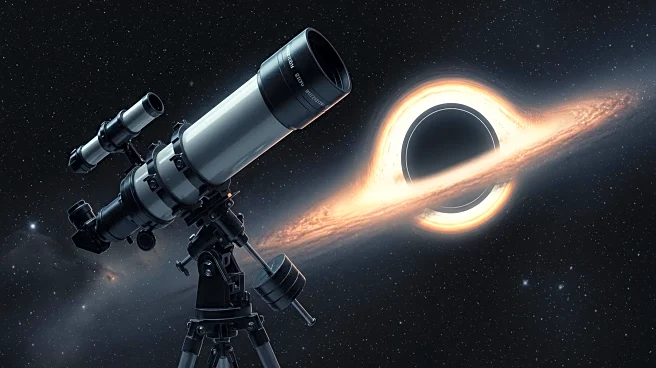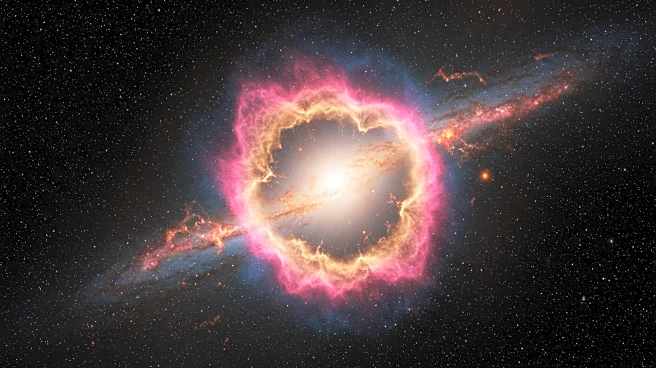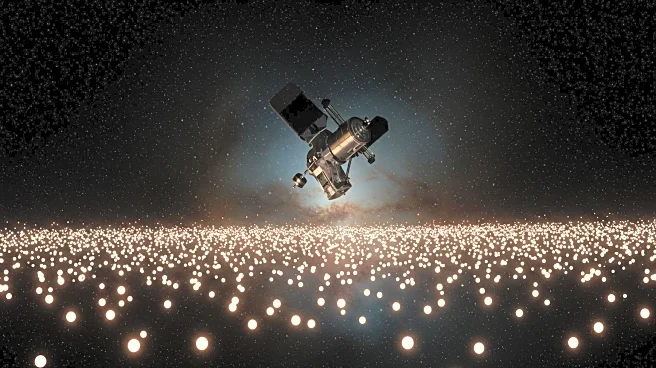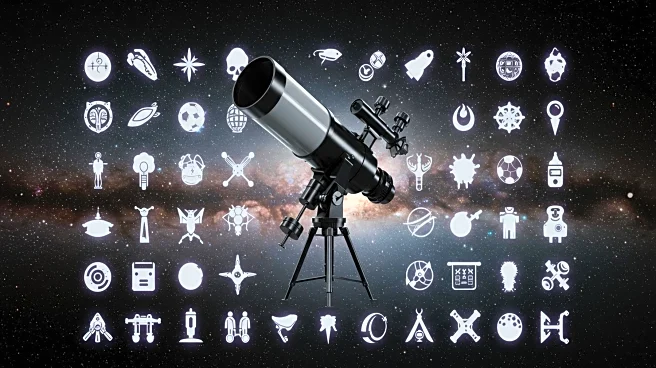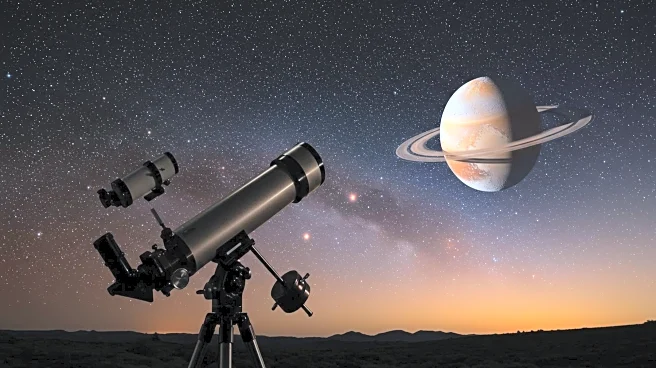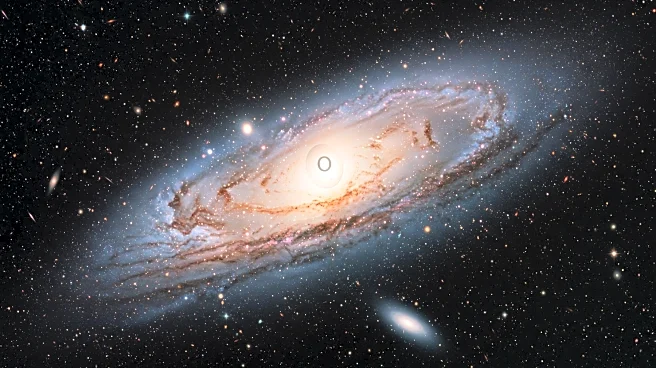What's Happening?
Recent observations from the James Webb Space Telescope have revealed that approximately 60% of ancient galaxies rotate clockwise, challenging previous assumptions about random galactic rotations. This discovery has led researchers to propose a bold hypothesis: our universe might be situated within a massive black hole. This theory suggests that the uniform rotational direction of galaxies could be influenced by a black hole's gravitational pull, prompting a reevaluation of cosmic models and the universe's fundamental laws.
Why It's Important?
The hypothesis that our universe could be within a black hole has profound implications for cosmology, potentially altering our understanding of the universe's origin, structure, and destiny. If validated, this theory would require a fundamental shift in cosmic principles and the development of new models to describe the universe's behavior. The discovery underscores the importance of continued cosmic exploration and observation, as technological advancements like the JWST offer revolutionary insights into the universe's mysteries. This research could redefine our grasp of cosmic dynamics and influence future astronomical studies.
Beyond the Headlines
Alternative explanations, such as observational biases like the Doppler effect, may influence interpretations of galactic rotations. These biases highlight the challenges in making precise astronomical measurements and underscore the need for refined telescopic techniques. Addressing these biases is essential to ensure the integrity of future research and validate current findings. The scientific community is focused on overcoming these challenges to unlock the universe's true nature and explore the potential implications of the black hole hypothesis.


